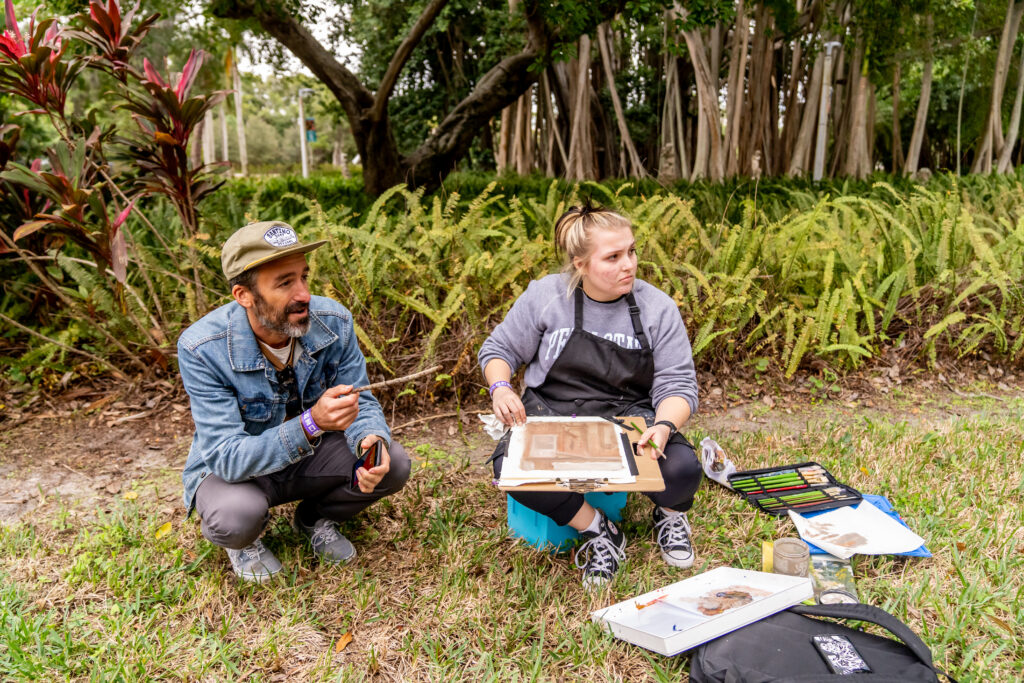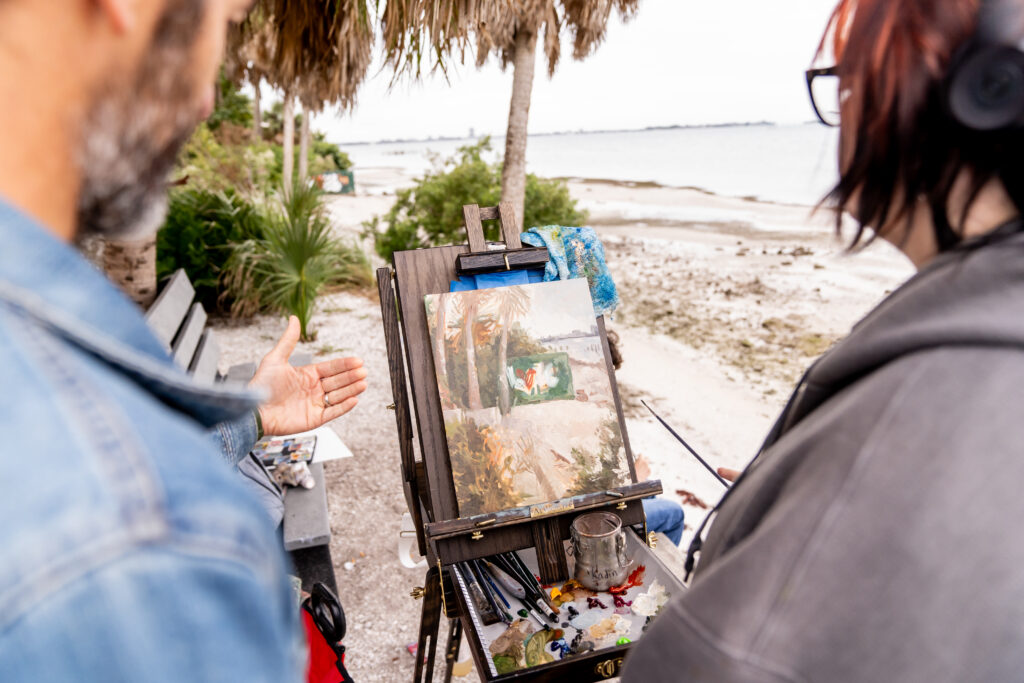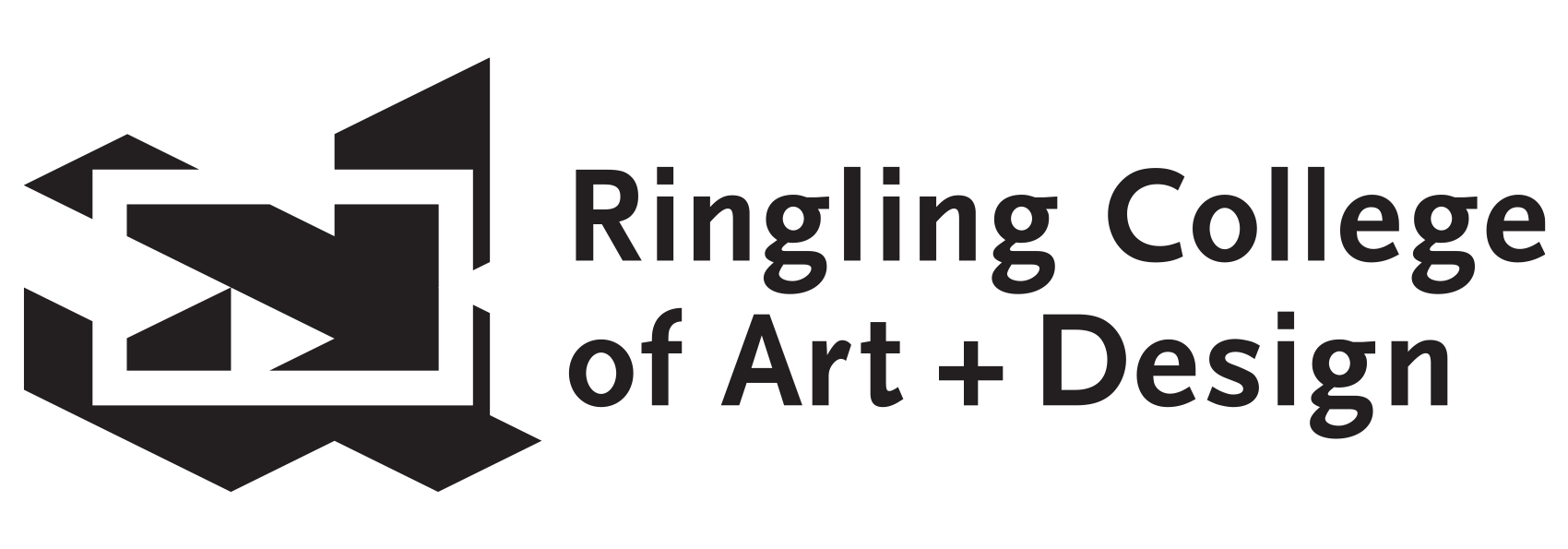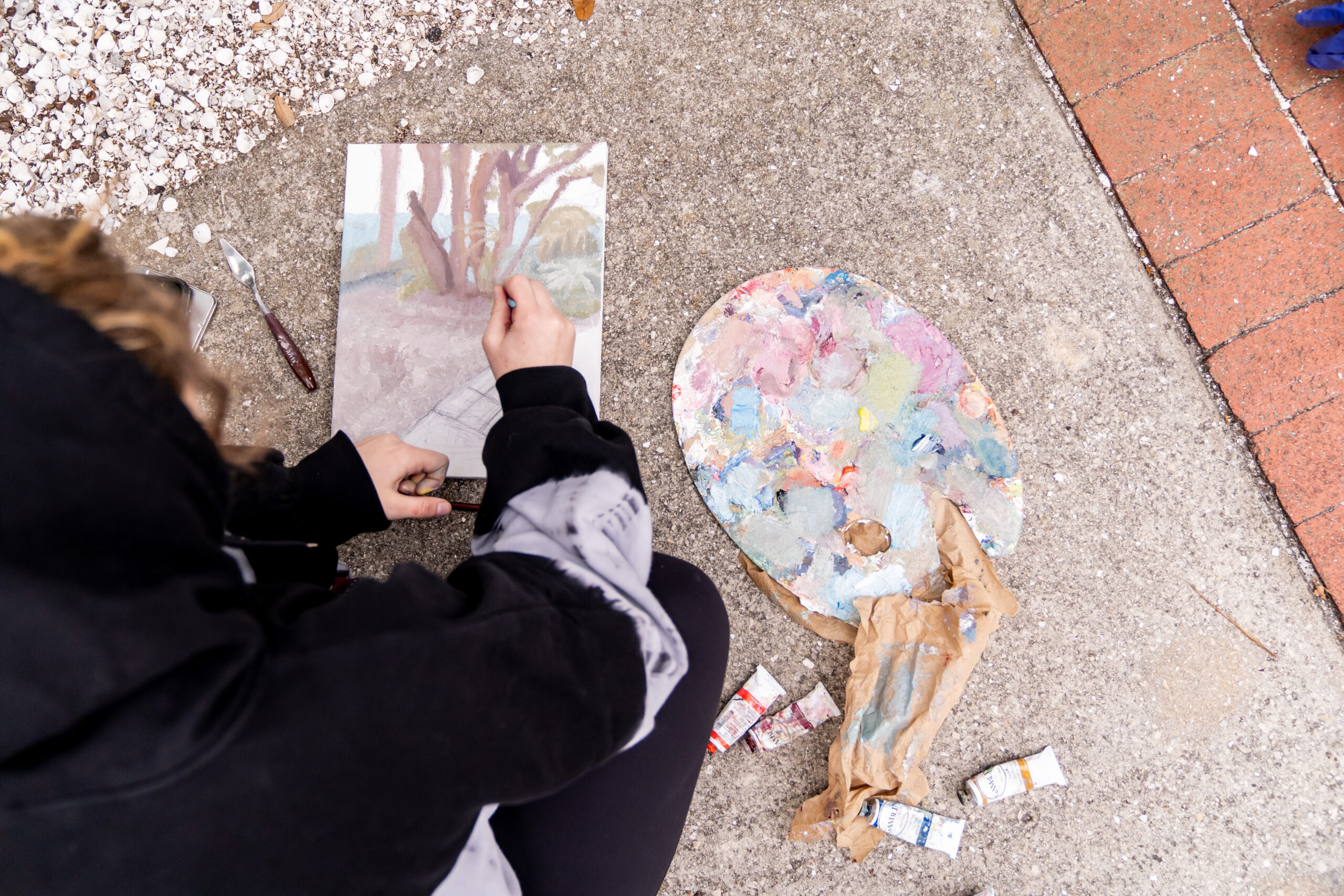As part of a new series where we invite arts professionals to share their tips on putting together a great portfolio, we’re featuring Ringling College Illustration faculty member Matteo Caloiaro. Caloiaro recently received an Exceptional Merit Award at the Art of the Portrait Conference in Washington, D.C. Of 3,100 entries globally, Caloiaro was one of only 19 finalists selected for the International Portrait Competition. He teaches painting, figure drawing, and perspective in the Illustration department at Ringling College.

When assembling an artist portfolio, Caloiaro emphasizes observational work that demonstrates technical ability more than personal expression.
“The biggest problem I see [in student portfolios] is including too much fan art or other work that does not clearly demonstrate foundational abilities,” Caloiaro said. “It’s fine to include pieces that demonstrate your ability to invent and conceptualize, but most schools want to see your observational work. As an art professor myself, this is what I look at most seriously when evaluating student work.”
While aspiring artists are eager to demonstrate individual style and perspective, Caloiaro urges patience. Style should be built on a solid foundation, and there will be plenty of time for personal style to evolve organically.

“At the student level, I don’t think artistic voice is something that should be emphasized as heavily as observational work,” he said. “Individual artistic voice will develop naturally. It’s like handwriting—everyone has a unique way of writing that develops without any real intention of individuality.”
Still, he added, “observational” is not the same as sterile photocopying. Good observational art still leaves room for a sense of perspective and emotion.
“Creativity is something that comes through more in conceptual, narrative or inventive work, but it also shows in simple things like how the individual artist makes marks or interprets the subjects that are being drawn, painted, or sculpted,” he said. “It’s important to not just copy things in a formulaic way, but do so with expression and enthusiasm. You can creatively respond to your subject without approaching it with mathematical stiffness.”

For teachers, too, there’s a balance to be struck between pushing the foundations and allowing for individualism. “If you get away from the fundamentals too soon, the student will be much less versatile,” he explained. “And if you stifle too much of their creativity, their work can get sterile and dull.”
It’s a balance he admits that he struggles with himself. The key is to read the situation.
Caloiaro said that teachers are responsible, in part, for broadening students’ horizons by exposing them to widely varying styles as they develop.
“Once they are farther along in their schooling, it’s important to expose students to wide range of influences (both historic and contemporary), so the student is less likely to just regurgitate the same type of work that they are seeing on the internet, social media or even from their peers,” he said.
Portfolios, especially when you’re trying to get into art school, can become an all-encompassing pursuit. But it is possible to put too much emphasis on compiling a portfolio, at the expense of the art itself. Above all, Caloiaro added, “Don’t stress about it.”
“While it is important to have the portfolio in mind, the work that is done throughout the school year should not be simply viewed as a means to an end, but should be done with skill and passion.”
Sign up for our newsletter to get the latest Ringling College news in your inbox.
Contact:
Office of Marketing and Communications
communications@ringling.edu
941-309-4008



